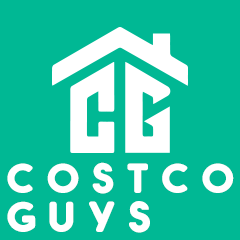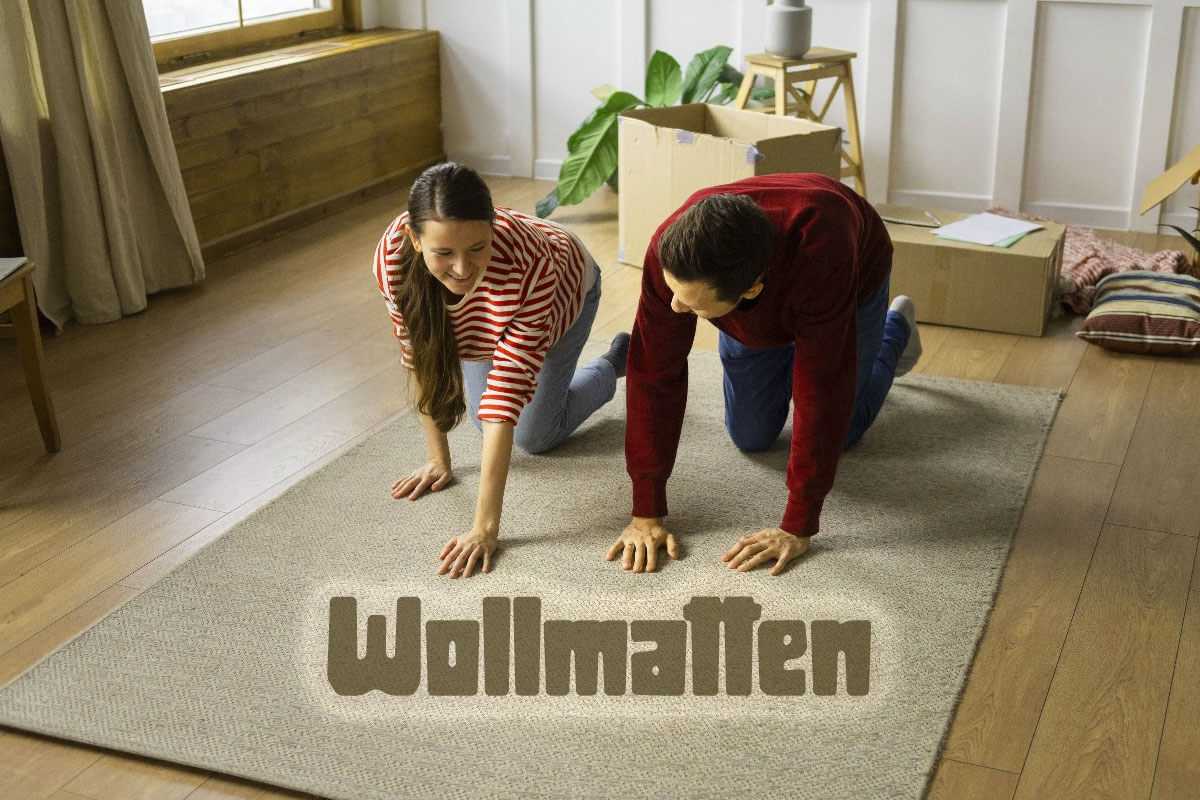Wollmatten are natural fiber mats made from sheep’s wool, used for insulation, flooring, and soundproofing. The term originates from German, where “Woll” (wool) and “Matten” (mats) combine to describe a wide family of woolen products. They offer excellent thermal insulation, regulate moisture naturally, and improve indoor air quality. With a thermal conductivity of 0.035 to 0.04 W/mK, they outperform many synthetic alternatives in insulation performance.
What are Wollmatten And How Are They Manufactured
Wollmatten are created from sheared sheep’s wool through specialized processing methods . The wool fibers undergo washing, carding, and then processing into mats through various techniques.
The manufacturing process starts with cleaning the raw wool. Dirt, grease, and impurities are removed during this stage . Carding follows, where fibers are aligned parallel to each other. The prepared fibers are then formed into mats through felting or weaving. Manufacturers often add biological protective agents like boron salts to protect the wool from pests and fire . Modern innovations include blending wool with other natural fibers like jute, hemp, or cotton to enhance texture and performance . The final product comes as rolls or panels in thicknesses from 50 to 300 mm, with both felted wool mats and woven wool mats available depending on application needs.
The crimped structure of wool fibers forms millions of tiny air pockets. These air cushions provide the excellent insulation effect. The production process consumes less than 15 percent of the energy required for fiberglass . This makes wool-based insulation an energy-efficient choice from manufacturing through installation. The natural crimp also gives the material its spring-back quality, allowing it to maintain thickness over time. Each wool fiber contains three distinct layers: an outer layer with overlapping scales that repel water, a middle layer providing strength, and sometimes a hollow core that enhances insulation .
Technical Properties And Performance Data
Wollmatten achieve thermal conductivity values of 0.033 to 0.04 W/mK . This hygroscopic quality distinguishes them from synthetic insulation materials that typically show higher thermal conductivity values.
The wool insulation material performs strongly across multiple areas. Thermal conductivity depends mainly on density, with optimal values between 31 and 50 kg/m³ . Tensile strength exceeds required values by double. Sheep’s wool only ignites above 560 degrees Celsius , significantly higher than wood at 270 degrees, demonstrating its fire-resistant nature. During fire, the material only chars and does not spread flames further. This makes it safer than many artificial materials for building applications. Unlike mineral wool or stone wool, which are inorganic materials, Wollmatten consist entirely of natural protein fibers.
The moisture regulation capability stands out remarkably. Wool can absorb up to 33 percent of its own weight in moisture without losing its insulation properties . The hygroscopic core of the fibers takes up water vapor and releases it when air becomes dry. This natural climate regulation prevents mold formation. Keratin, the main protein in wool, can absorb and neutralize harmful gases like formaldehyde, nitrogen dioxide, and sulfur dioxide . Studies show a reduction of volatile pollutants by up to 50 percent in spaces insulated with wool through a process called chemisorption. The natural lanolin content in wool fibers also discourages dust mites, providing additional health benefits.
The R-value for sheep’s wool insulation typically ranges from 3.5 to 3.8 per inch of thickness. This thermal resistance measurement helps compare different materials within the broader insulation system category on equal footing. Higher density products provide better sound absorption alongside thermal benefits.
Application Areas For Wollmatten
Wollmatten work well for interior spaces, construction, agriculture, and specialty uses. These versatile, biodegradable materials serve as thermal regulation, sound absorption, and moisture control solutions . Their versatility makes them a practical choice for various projects.
Interior spaces: As floor covering or carpet, Wollmatte (singular form) products provide comfort and warmth. The natural fiber structure dampens footstep noise effectively. In living spaces, they improve indoor climate through moisture absorption and pollutant breakdown. Quilters and sewers have embraced wool pressing mats as essential tools because these mats offer double-sided pressing and retain heat . Yoga mats made from wool offer a non-slip, breathable surface for practice. The natural lanolin in wool discourages dust mites, making them ideal for reducing allergens .
Building and insulation: In timber frame construction, Wollmatten preserve the wood structure through their moisture-regulating properties . They fill cavities in walls, roofs, and floors as part of the building envelope. The insulation works particularly well for old building renovations because it flexes and adapts to irregular spaces. Installation requires no protective clothing, making the work easier and safer for installers. These textile products can be integrated into various wall assemblies without complex fastening systems.
The material fits between rafters or studs without additional fastening. You can cut it to size with an electric knife. This ease of handling reduces labor costs and installation time. The material also works for acoustic ceiling installations where sound dampening matters most. As sustainable building products, they meet many green building certification requirements.
Agriculture and garden: Wollmatten protect plants from frost, retain soil moisture, suppress weeds naturally, and release nitrogen as they decompose over time . Biological degradability makes them ideal for organic gardening. Farmers use them as ground covers in greenhouses and nurseries. The wool slowly breaks down, adding nutrients to soil over time. These eco-friendly materials replace plastic mulch films that persist in the environment.
Specialty areas: The acoustic properties make Wollmatten excellent sound dampeners . In recording studios, offices, and apartment buildings, they reduce noise noticeably. Pet owners use wool matting as comfortable, washable bedding for animals. The natural fibers resist odors better than synthetic materials. Vehicle manufacturers explore wool insulation for automotive applications as sustainable alternatives to synthetic materials . Some companies are experimenting with embedding sensors in the mats to monitor foot pressure or room temperature , showing how traditional materials adapt to modern needs.
Benefits and Potential Limitations
Wollmatten score high on sustainability, comfort, and durability. At the same time, practical limits need attention. Understanding both aspects helps you make informed decisions.
Advantages of natural insulation: Sheep’s wool binds large amounts of CO₂ during growth, making the insulation store more CO₂ than it emits over its entire lifecycle . The carbon footprint measures negative 19.3 kg CO₂ equivalent per cubic meter, demonstrating exceptional CO₂ storage capacity. The material is fully renewable since sheep get sheared annually. After use, you can compost or reuse the wool. Installation is health-friendly. It causes no skin irritation or respiratory problems. Lifespan reaches 20 to 30 years for sheep’s wool, while mineral wool lasts up to 50 years . With proper installation, Wollmatten can last decades—often 40+ years—without losing their insulating qualities .
The material maintains performance without sagging or settling when properly installed. Unlike fiberglass, wool does not release irritating particles into the air. This makes it safer for homes with children or people with sensitivities. The natural flame resistance provides an extra safety margin without chemical treatments in many products. As biodegradable materials, they align with circular economy principles. The use of wool for textiles dates back to the Bronze Age (approximately 3300 BCE – 1200 BCE), with evidence showing early humans utilized wool for durable textiles , demonstrating its time-tested reliability.
Limitations and risks: Without treatment, wool can attract insects and encourage mold . Manufacturers therefore use boron salts or similar agents. In very humid climates, additional moisture barriers become necessary. Availability can be regionally limited. With short-term water exposure, absorption does not exceed the permissible value of 1 kg/m² . Long-term wetness should be avoided, though. Maintenance requires regular ventilation, especially in attic spaces. Direct sunlight can bleach and weaken fibers over years.
The cost factor presents the biggest challenge for many projects. Some builders find the premium hard to justify despite long-term savings. Finding qualified installers familiar with natural fiber insulation materials can prove difficult in certain regions. Chemical treatments, while necessary for pest resistance, make the product less purely natural than untreated wool. In German industry, the term “Wollmatten” sometimes refers to mineral or stone wool mats reinforced with wire mesh , showing the polysemy of the term across different contexts.
Costs, Economic Efficiency and Practical Selection Tips
Wollmatten with 60 mm thickness cost an average of 17.50 to 22 pounds per square meter . This runs more expensive than synthetic alternatives but reflects the premium quality of sheep wool mats.
Cost overview and payback: Sheep wool insulation costs about four times more than fiberglass . The higher purchase price balances out through energy savings. A typical single-family home with 100 square meters of insulation area requires an investment of 1,750 to 2,200 euros for materials. Installation costs add 15 to 25 euros per square meter. Heating costs drop by 20 to 40 percent depending on the building. At an energy price of 0.10 euros per kWh, the investment pays back in 8 to 15 years.
Government incentives and tax rebates for energy-efficient upgrades can reduce the effective cost significantly. Some regions offer grants covering 30 to 50 percent of installation costs. The global sheep wool insulation market was valued at USD 460 million in 2024 and is forecasted to reach USD 790 million by 2033, growing at a CAGR of 6.12% . Europe leads the market with over 58% share in 2024, driven by green building regulations in countries like Germany, the United Kingdom, and France . The resale value boost from improved insulation often exceeds the initial investment when selling the property.
Selection criteria: Thickness should match the application. For roof slopes, 160 to 200 mm works best, while interior walls need only 50 to 100 mm. Optimal density sits between 31 and 50 kg/m³ for best thermal performance . Pay attention to processing quality. Two-layer products with a dense outer and open inner layer offer higher tear strength and better insulation values. Check the origin. Wool from regional sheep farming ensures shorter transport distances and supports local agriculture. Consider whether you need pressed wool panels or flexible rolled products.
Look for certifications like LEED or Passive House approval if your project requires them. Products with GOTS (Global Organic Textile Standard) or OEKO-TEX certifications provide recognized frameworks of trust and transparency . These indicators help verify environmental claims. Price varies by brand and source country, so compare multiple suppliers before buying. Designer and artisan-made Wollmatten showcase skilled craftsmanship and are often produced in limited quantities , commanding premium prices.
Installation and maintenance: Installation is straightforward. You can cut the mats to exact size with an electric knife. They wedge between rafters or studs without additional fastening. For cavities in exterior walls, a vapor barrier on the warm side is recommended. Regular ventilation prevents moisture buildup. Every two to three years, check the mats for pest infestation. If needed, you can replace individual sections without problems. The reusability makes Wollmatten a cost-efficient choice for renovations and conversions.
Proper installation technique matters for performance. Gaps and compression reduce effectiveness. The material should fill the space completely but not pack down excessively. In horizontal applications, support prevents sagging over time. For vertical walls, friction-fit installation usually suffices. Advanced treatments using natural water- and fire-resistant coatings can extend durability further , representing ongoing innovations in this traditional material.
3 Key Points About Wollmatten:
- Superior insulation with natural moisture regulation: With thermal conductivity values of 0.035 to 0.04 W/mK, Wollmatten provide better insulation than mineral wool and can simultaneously absorb up to 33 percent of their weight in moisture without losing insulation capability through their hygroscopic fiber structure.
- Health and environmental benefits through biological processes: The keratin protein in sheep’s wool neutralizes pollutants like formaldehyde and reduces volatile organic compounds by up to 50 percent through chemisorption. Production consumes 85 percent less energy than fiberglass manufacturing, and the material stores more CO₂ than it emits over its lifecycle.
- Long-term economic value despite higher initial costs: Although Wollmatten cost four to five times more than synthetic insulation, the costs pay back through energy savings of 20 to 40 percent and a lifespan of up to 50 years, making them financially sound investments that support sustainable building practices and local wool-producing agricultural communities.





